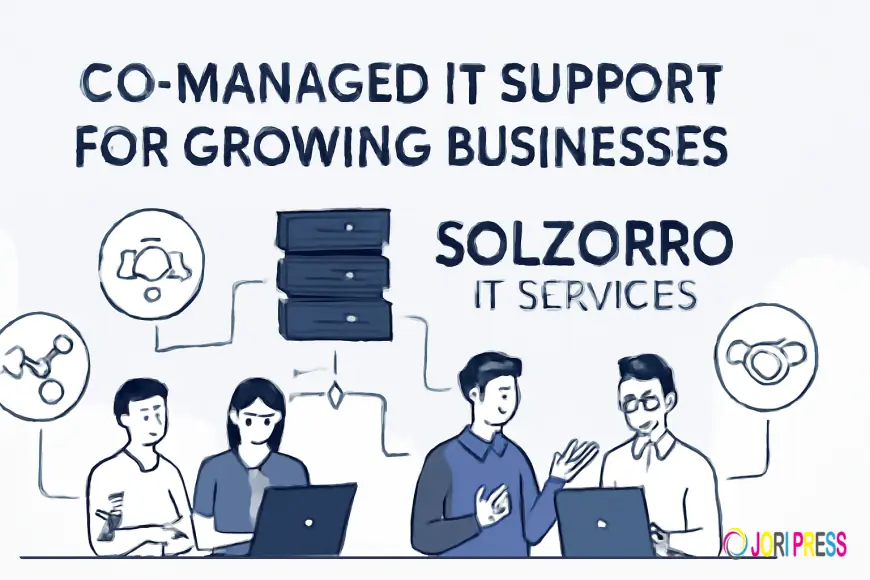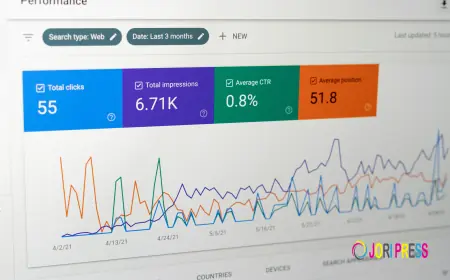Why Co-Managed IT Support is the Smart Choice for Growing Businesses.
Learn what co-managed IT support is, how it works, and why it’s ideal for growing businesses that need extra IT expertise and scalability.

Running a business today requires more than just good products or services—it requires strong technology. But for many organizations, managing IT completely in-house or outsourcing it entirely doesn’t always strike the right balance. That’s where co-managed IT support comes in.
This hybrid IT model combines the strengths of your internal IT team with the expertise of an external provider, giving you flexibility, scalability, and peace of mind. In this article, we’ll explore how co-managed IT support works, its benefits, and why it’s a great option for businesses looking to optimize technology without overextending resources.
What is Co-Managed IT Support?
Co-managed IT support is a partnership between your in-house IT staff and an external IT services provider. Instead of replacing your existing team, the external partner supplements them by filling gaps—whether in skills, coverage, or tools.
For example, your internal IT staff may handle day-to-day support, while a co-managed provider can manage advanced tasks such as cybersecurity, cloud migrations, or 24/7 monitoring.
This arrangement allows businesses to tailor IT support to their exact needs, avoiding the all-or-nothing choice between full outsourcing and in-house management.
Key Benefits of Co-Managed IT Support
1. Scalability on Demand
As businesses grow, IT demands increase. With co-managed support, you can quickly scale resources without the long hiring process. This flexibility ensures your IT can keep pace with your business.
2. Access to Advanced Expertise
Some IT tasks—like compliance, cybersecurity, or network design—require specialized skills. Partnering with a provider ensures your team has access to expertise they may not have in-house.
3. Cost Efficiency
Hiring and training a full IT staff is expensive. Co-managed IT allows businesses to only pay for the services they need, avoiding unnecessary overhead while still ensuring coverage.
4. Reduced Burnout for IT Staff
Internal IT teams often face heavy workloads. Co-managed support reduces pressure by sharing responsibilities, allowing in-house staff to focus on strategic initiatives rather than troubleshooting alone.
5. Enhanced Security and Compliance
With cyber threats growing daily, a co-managed partner adds an extra layer of protection. Providers often have advanced security tools, threat intelligence, and compliance knowledge that complement internal efforts.
When Should Businesses Consider Co-Managed IT?
Co-managed IT support isn’t for everyone, but it’s an excellent fit for organizations in certain situations:
-
Growing Companies: Businesses expanding quickly often outpace the abilities of their IT team.
-
Overwhelmed IT Staff: If your team is stretched too thin, co-managed services provide relief.
-
Compliance Needs: Companies in industries like healthcare or finance may need help meeting strict regulations.
-
Strategic IT Goals: When planning projects like cloud migrations, infrastructure upgrades, or cybersecurity frameworks, outside expertise is invaluable.
How Co-Managed IT Support Works in Practice
A co-managed IT model is highly customizable. Here are common ways businesses structure the partnership:
-
Help Desk Support: External providers handle end-user requests while internal staff focus on projects.
-
Cybersecurity Monitoring: Providers monitor threats 24/7, while internal IT enforces policies.
-
Project Collaboration: Both teams work together on upgrades, migrations, or compliance audits.
-
Tool Access: Businesses can leverage enterprise-grade tools and platforms offered by providers at lower costs.
For example, at Solzorro’s co-managed IT support, the model allows businesses to choose services à la carte—ensuring no overlap and seamless collaboration with existing staff.
Potential Challenges and How to Overcome Them
Like any partnership, co-managed IT comes with challenges. The most common include:
-
Clear Role Definitions: Avoid confusion by defining which tasks the internal team handles and which the provider manages.
-
Communication: Set regular check-ins to ensure both teams align on goals and processes.
-
Security Concerns: Ensure your provider follows strict security protocols and compliance standards.
With proper planning, these challenges are easily manageable, leading to a highly effective IT strategy.
FAQs About Co-Managed IT Support
Q1: Is co-managed IT support only for large companies?
No. While enterprise companies benefit, small and mid-sized businesses also use co-managed IT to extend their capabilities without hiring full teams.
Q2: Will my internal IT staff lose control?
Not at all. The internal team retains oversight and decision-making, while the provider works as a collaborative partner.
Q3: How much does co-managed IT cost?
Costs vary based on services chosen. The model is flexible—you only pay for what you need, making it more affordable than hiring full-time staff for every role.
Q4: Can co-managed IT help with compliance?
Yes. Providers often bring deep compliance knowledge (e.g., HIPAA, GDPR) and can help businesses avoid penalties or breaches.
Final Thoughts
In today’s competitive environment, technology plays a vital role in business success. But managing IT entirely in-house or outsourcing everything isn’t always efficient. Co-managed IT support offers a middle path—combining internal knowledge with external expertise to create a powerful, flexible solution.
Whether you’re a growing company, facing complex compliance requirements, or simply need to relieve pressure on your IT team, co-managed IT may be the right choice to help your business thrive.
Files
What's Your Reaction?
 Like
0
Like
0
 Dislike
0
Dislike
0
 Love
0
Love
0
 Funny
0
Funny
0
 Angry
0
Angry
0
 Sad
0
Sad
0
 Wow
0
Wow
0

























































